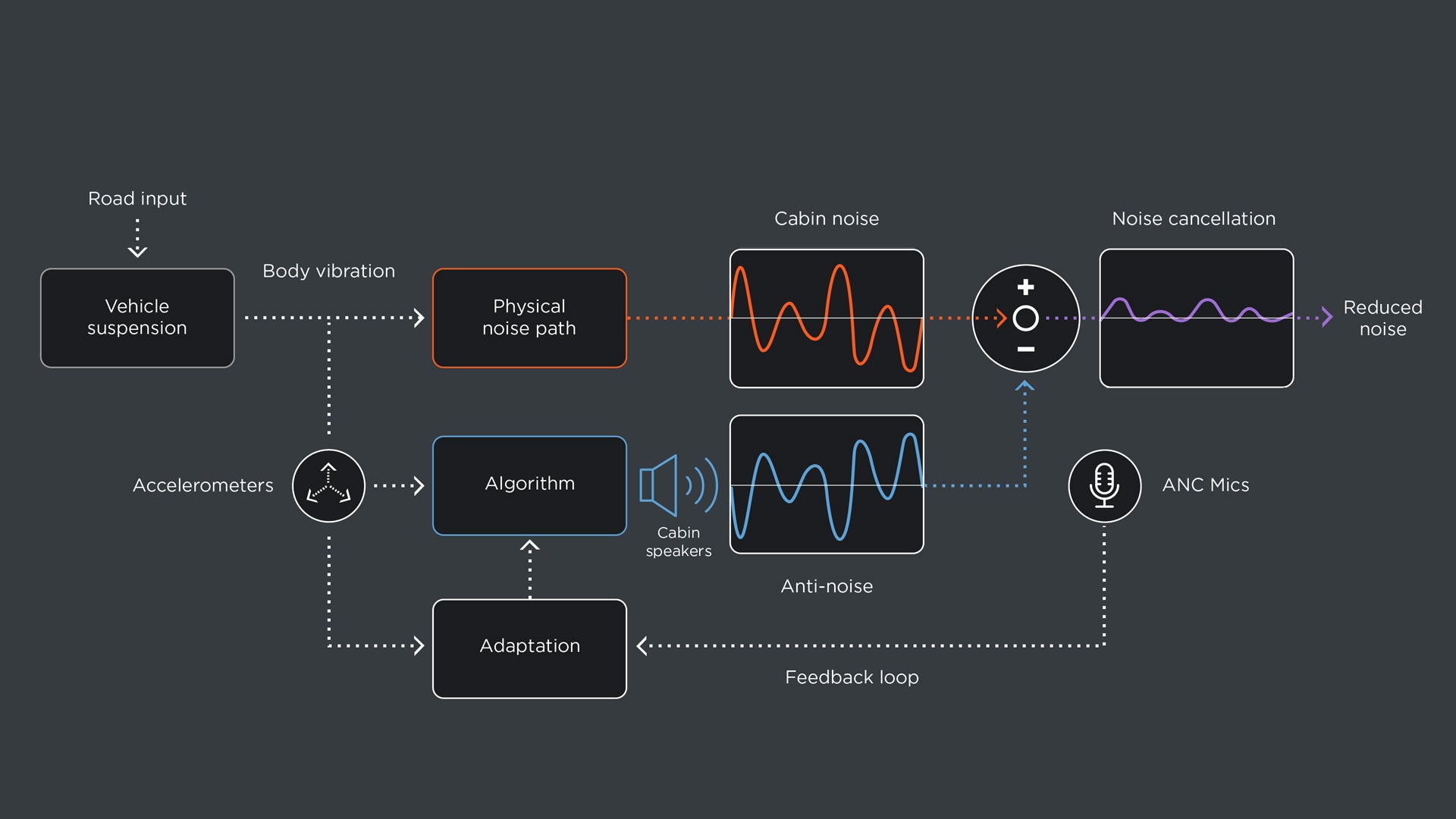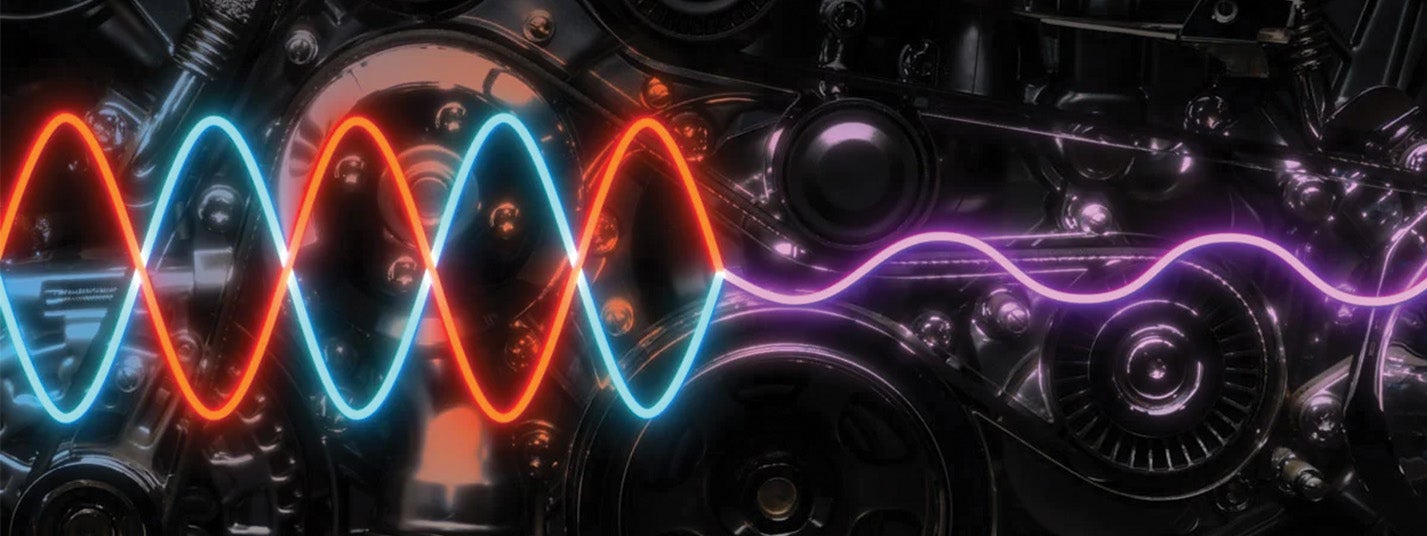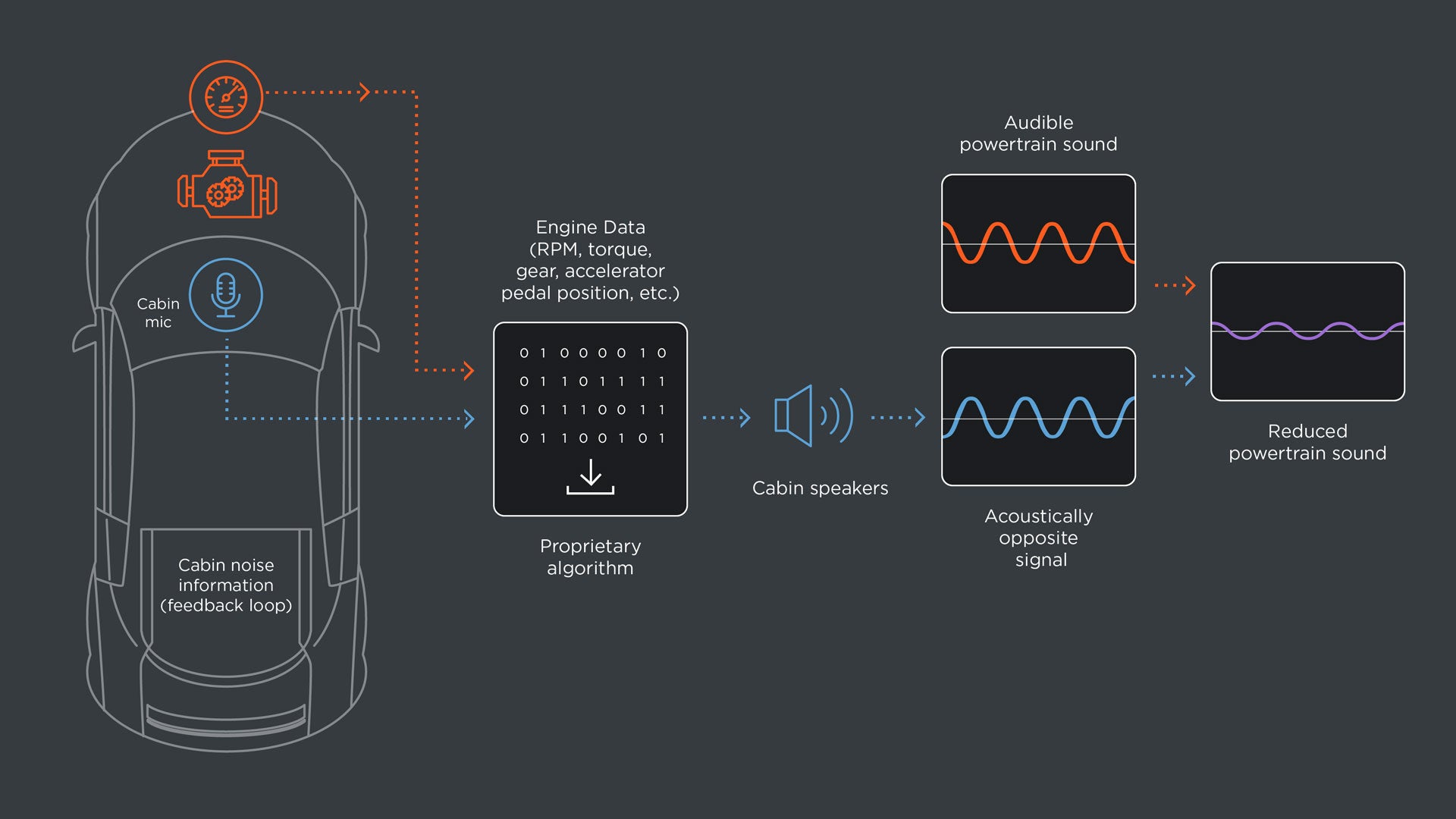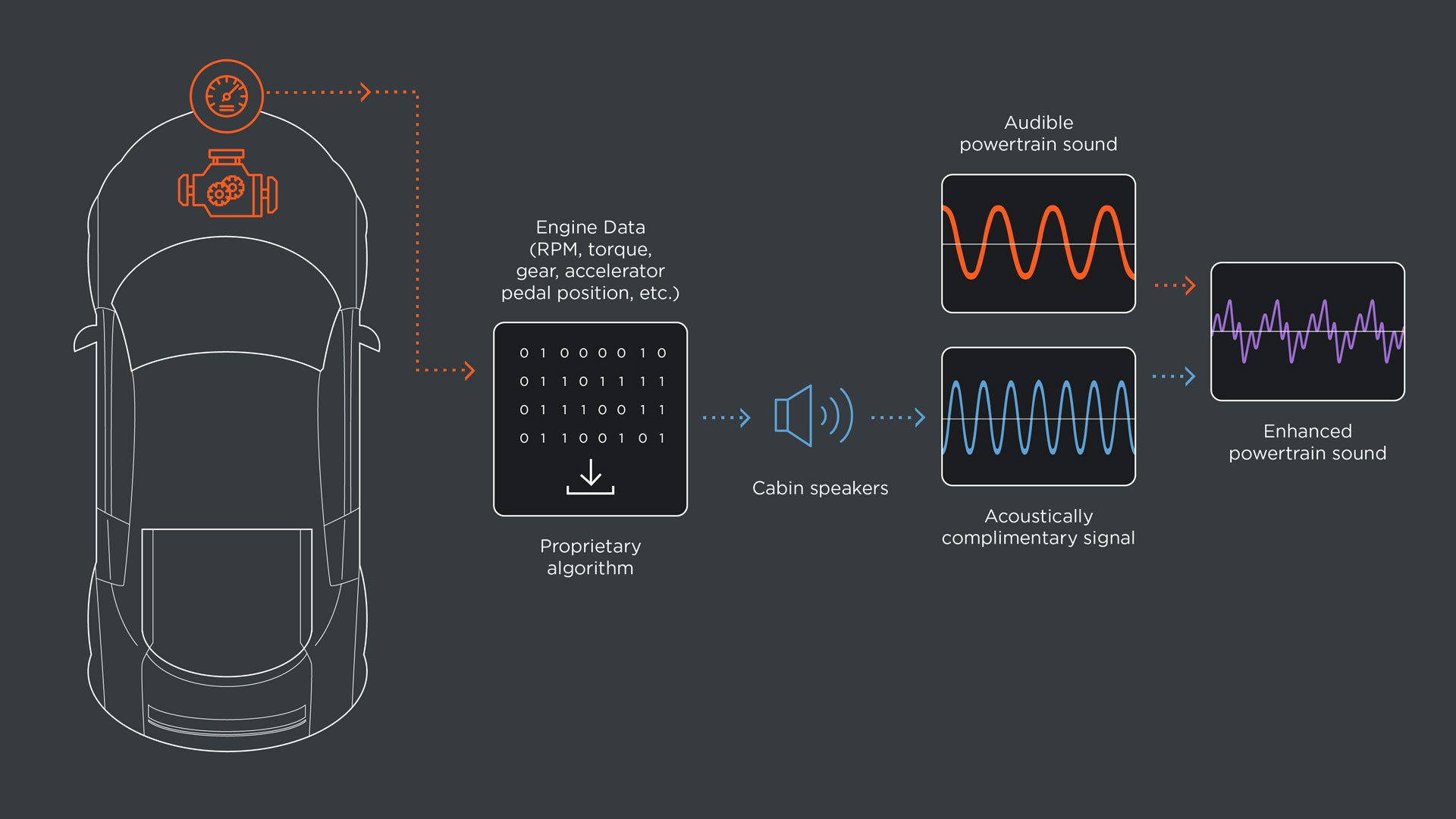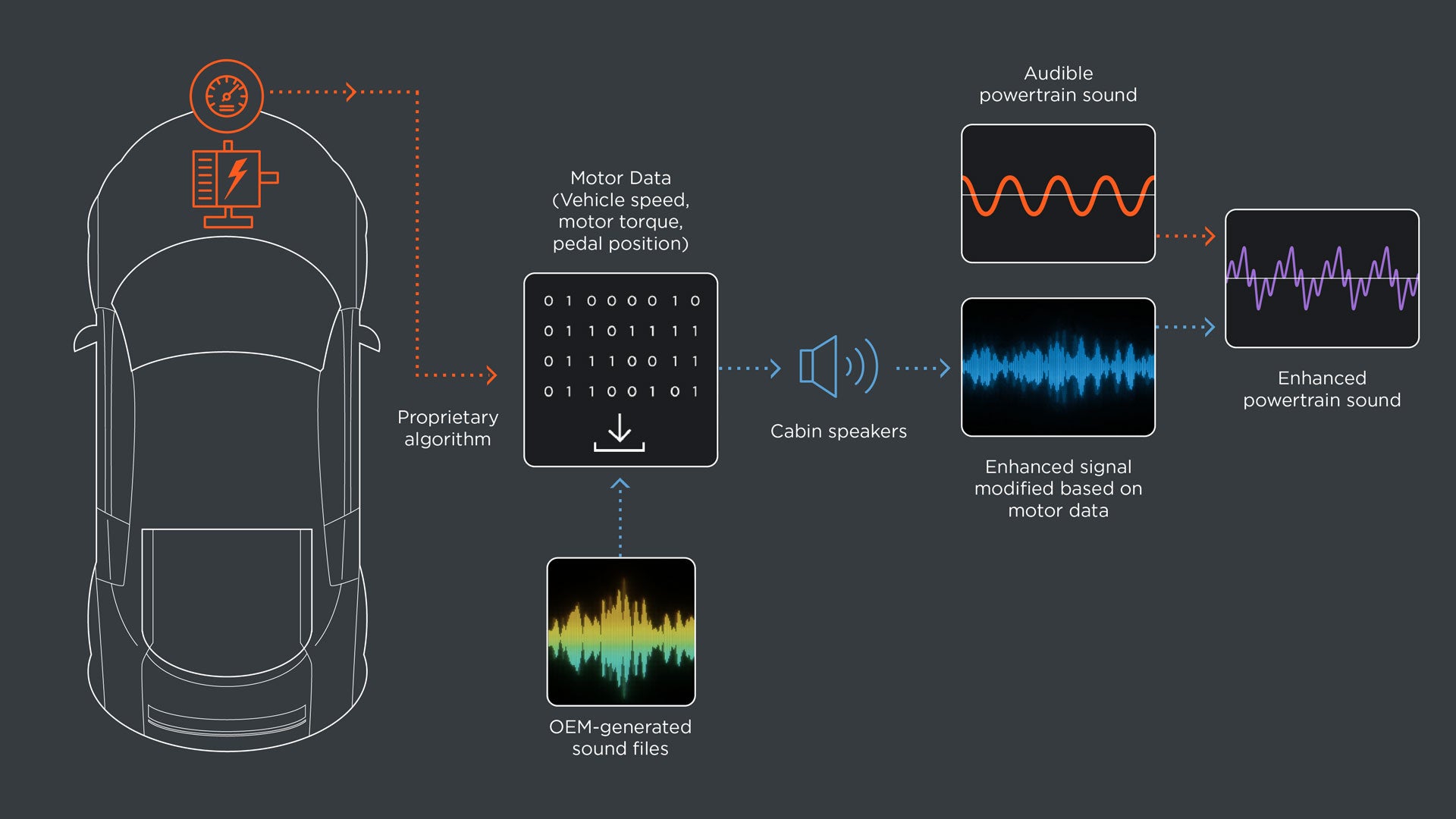Innovación
que se escucha en cada asiento
Bose ASM is a powerful suite of sound and noise management technologies designed to help carmakers realize their vision. By applying active solutions to mechanical problems, ASM technology tackles the toughest noise and sound management issues. The benefits include creating in-cabin experiences that truly transport drivers and passengers, meeting the expectations of tomorrow’s consumers, reducing the number of trade-offs and empowering engineers to go further.
Our ASM technologies are complementary and flexible. They work alone or in combination to deliver the target sound.
The carmaker maintains control of the collaborative process, using our powerful suite of tools to achieve its goals. Bose provides consulting and implementation support, including expert tuning and system integration services. All to help create the best possible in-cabin experience for the vehicle.
Noise management technologies for different challenges
Cabin noise has many characteristics, including harmonic content and bandwidth. Engineers have long tried to master these elements. Traditional, passive measures have been used effectively for years to reduce high-frequency noise. But they require significant mass to address low-frequency noise. With Engine Harmonic Cancellation and QuietComfort Road Noise Control, engineers can more effectively reduce low-frequency noise while adding minimal weight.
Solutions for every type of vehicle
Noise and sound issues impact most vehicles, regardless of how much they cost. Bose ASM solutions can benefit vehicles in every segment – from entry-level to sports to luxury vehicles, as well as SUVs and trucks. Bose ASM solutions can be used with base-level or premium-level sound systems from multiple manufacturers – with the understanding that sound system components and system architecture are factors in setting ASM performance targets.
Algorithms that work on multiple hardware platforms
The modern car is a network of digital technology and software built into the chassis of an automobile. In this new world of automotive design, whole-vehicle platforms are replacing individual processing units and compatibility is crucial. With this in mind, Bose ASM technologies are designed to run on multiple industry-leading computing platforms, enabled by audio hardware from multiple suppliers. In other words, Bose ASM doesn’t need to be coupled to a Bose music system, which allows almost any carmaker to access this unique set of end-user experiences.
Active Sound Management Technologies
QuietComfort Road Noise Control
Tame the sound of the road while reducing overall mass and increasing vehicle range.
QuietComfort Road Noise Control uses a broadband cancellation algorithm, together with accelerometers, microphones, and the vehicle’s audio system to reduce road, tire, and chassis noise in the cabin over a wide range of frequencies. But it’s what QuietComfort RNC unlocks for engineers that really matters. Traditional mechanical methods of reducing low frequency noise from the road, tires, and chassis – including thick insulation, undercoating, and heavier chassis components – have meant adding significant mass to vehicles. That added mass has a negative impact on things like fuel economy and electric vehicle range.
QuietComfort RNC is based on over 30 years of industry-leading active noise cancellation and psychoacoustic research which has been applied to our automotive portfolio in the past decade. It allows drivers and passengers to experience world class overall noise reduction – even in entry-level vehicles. Simply put, QuietComfort RNC is a class apart.
How it works
QuietComfort RNC uses sensors to detect chassis vibrations before they become noise transmitted to the vehicle cabin. The algorithm then delivers a cancellation signal, played through the vehicle’s sound system inside the car, reducing the low frequency noise heard by the occupants. It adapts to different road surfaces, tires, and changing vehicle characteristics. That means that QuietComfort RNC performance remains adaptable and effective throughout a vehicle’s lifetime, unlike traditional mechanical solutions that are fixed at the design stage and can wear out as the vehicle ages.
QuietComfort Road Noise Control supports these experience domains:
Engine Harmonic Cancellation
Engineer cars with greater freedom, fewer trade-offs, and more desirable powertrain sounds.
Engine Harmonic Cancellation is an adaptive technology that reduces noise in the car cabin by creating a noise cancellation signal to counteract the sound of rotating sources such as engines, propeller shafts, and electric motors. It is programmed to identify and eliminate targeted harmonics, so drivers only hear the most pleasant engine sounds.
But EHC is about reducing more than just engine noise. It also allows carmakers to reduce the trade-offs typically needed in the car design process. This means engineers can minimize compromises and maximize performance. Similar to other Bose ASM technologies, Engine Harmonic Cancellation is a lightweight, electronic solution. It reduces low frequency noise in the cabin without the drawbacks of traditional mechanical solutions, which can add significant mass, reduce fuel economy, or adversely affect emissions. Because every engine and cabin is different, Bose Systems Engineers tune the EHC algorithm for each vehicle variation – cabin interior, powertrain, and exhaust– to account for differences in the cabin acoustics and baseline noise.
How it works
Using information about the engine from the vehicle CAN bus and strategically placed microphones in the cabin, EHC technology continuously monitors and measures narrowband engine and driveline noise. The adaptive technology utilizes a proprietary algorithm to target specific harmonics and cancel much of the unwanted noise. EHC can manage multiple noise sources at once, each with multiple noise harmonics.
Engine Harmonic Cancellation supports these experience domains:
Engine Harmonic Enhancement
Fine tune the in-cabin experience and create the exact acoustic signature drivers want.
Getting the desired acoustic signature from an engine is often an expensive proposition involving tooling, induction tubing, balance shafts, active exhaust, and other mechanical measures. But tomorrow’s drivers demand the perfect listening experience, while tomorrow’s regulators have environmental and fuel efficiency demands of their own – and often these demands are in conflict with one another.
Bose Engine Harmonic Enhancement is designed to help reduce these and other industry pressures, helping to amplify specific parts of the engine’s sound output to create desired characteristics. Because when we drive a sports car, for example, we want a ‘sporty’ feel. While technologies like high-compression or turbo-charged engines yield great benefits, they can also negatively impact the desired cabin sound experience.
EHE does the same thing electronically that has been done for years mechanically – it makes selected aspects of the engine’s output louder to emphasize desirable characteristics. But because it is an electronic solution, it enhances the engine sound in the cabin while reducing the additional cost, weight and effort of using mechanical alternatives such as tuned induction pipes or special exhaust valves. This means engineers are free to create the best in-cabin experience possible. And to make it even easier to tailor that perfect sound signature, the proprietary Bose EHE toolset puts fine tuning in the engineers’ hands, giving them the flexibility to find the vehicle’s full sonic potential.
How it works
EHE uses sound system components and sensors to amplify specific engine harmonics and other sounds to improve the driving experience inside a vehicle cabin. It works primarily by enhancing the harmonics generated by rotating sources such as engines, drivelines, propeller shafts, or electric motors. This technology expands the possibilities for engineers in search of the perfect acoustic signature for their vehicles.
Engine Harmonic Enhancement supports these experience domains:
Electric Vehicle Sound Enhancement
Discover a new palette of possibilities for the sound signature of electric vehicles.
Electric Vehicle Sound Enhancement lets inspiration guide carmakers, helping them create the exact sound signature they want in electric vehicles. Because let’s face it, sometimes we want more than the standard whir of an electric motor. Now, with EVSE, that’s possible. In fact, the possibilities are nearly limitless. Custom-engineered powertrain sounds – that are hand-picked – are played through the vehicle’s sound system, making it possible to transform the sound signature of electric vehicles into anything.
By combining data from the vehicle’s motor – vehicle speed, motor torque and pedal position – with pre-recorded sound files and a proprietary algorithm, EVSE can create whatever acoustic signature carmakers want for their electric vehicles. Because EVSE is an electronic solution, it enhances the engine sound in the cabin without the additional cost and weight of mechanical alternatives. This means engineers are free to create the best in-cabin experience possible, without worrying about the impact on other aspects of the car design.
How it works
EVSE uses custom-engineered sounds played through the vehicle’s sound system to transform the acoustic signature of electric vehicles. It works by analyzing information such as vehicle speed, motor torque and pedal position, and then applying a proprietary algorithm to generate sounds that can change dynamically based on those inputs. This allows carmakers and engineers to create whatever acoustic signature they want for their electric vehicles.


